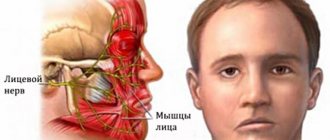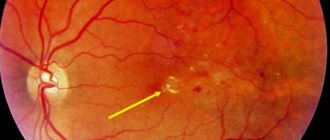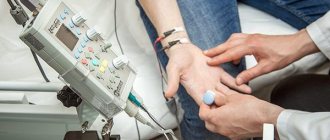Numbness in the leg is an abnormal condition in which there is a loss of sensation in the legs. You may feel numbness in one (unilateral numbness) or both (bilateral numbness) legs. Numbness in the legs may also extend to the feet and toes.
Numbness can occur due to an uncomfortable position when sitting or lying down. This process is accompanied by a slight tingling sensation, which quickly disappears if the person changes position.
A pinched nerve often leads to numbness. This phenomenon is caused due to problems with the spine. So, the main reason may be the presence of osteochondrosis. In this case, getting rid of the unpleasant symptom will not be so easy.
Causes of numbness in the legs
Loss of sensation in the arms and legs can result from:
Stress – often patients who have experienced anxiety note how their right or left arm and leg become numb at the same time. The mechanism for the development of these changes is central in nature, when the physiology of certain neurons responsible for the perception of limbs in space is disrupted;
Overwork – if a person constantly works without taking breaks, characteristic neurological disorders may occur. In this case, the cause of numbness in the arms and legs is a violation of conductivity and a decrease in the excitability of the nervous tissue that occurs during overload;
Numbness of the limbs during sleep - here it is worth paying attention to the position in which you sleep, as well as the quality of the mattress.
Vitamin deficiencies - limbs often go numb due to a lack of vitamins. These substances affect blood circulation because they are part of blood vessels and nervous tissue. If their quantity is insufficient, physiological disorders occur, including sensitive ones.
The essence of the disease
Ethyl alcohol and its metabolites (in particular, acetaldehyde) negatively affect both the neurons themselves and their membrane. In the first case, the function of the cells suffers, in the second the degree of protection deteriorates - they are damaged by pathological factors, and as a result, normal physiological processes in neurons are disrupted.
What category of diseases does leg failure in alcoholism belong to? What is it called according to terminology? Its presence indicates polyneuropathy - multiple damage to peripheral nerve endings.
Please note: Legs fail in every tenth alcoholic, according to other data - in every third. In the “chronicles,” even in the absence of symptoms, disturbances in nerve cells were observed in 9 out of 10 patients.
Males are affected more often.
Other causes of numbness
The leg is removed from the nerves in the following cases:
Rheumatoid arthritis. The development of the disease is accompanied by compression of the nerve endings in the knee joint. Discomfort most often occurs below the kneecap.
Gout. As a result of salt deposition in the joints of the feet, the big toe loses sensitivity, after which numbness affects the entire foot.
Atherosclerosis. The lower extremities may become numb as a result of impaired blood flow due to narrowing of the lumen of the femoral artery.
Vascular antiopathy, which developed against the background of diabetes. Gangrene often becomes a complication of this disease.
Polyneuropathy. The disease develops against the background of diabetes, alcoholism and heavy metal poisoning. As a result, the impulses of all nerve endings are blocked.
Multiple sclerosis. Progressive nerve disorders such as multiple sclerosis (MS) cause numbness due to damage to the myelin sheath of the nerve.
Leg diseases due to alcoholism
Over time, the described pain syndrome increases in alcoholics. But it is not the syndrome itself that should cause concern, but the pathologies that this syndrome signals. Most often this is:
- alcoholic polyneuropathy - damage to peripheral nerve endings;
- alcoholic myopathy - muscle damage;
- phlebothrombitis - the formation of blood clots in the veins due to damage to their walls;
- arthrosis - degenerative changes in the joints.
Symptoms that may occur along with numbness in the legs
Numbness in the leg may occur along with other symptoms or a combination of symptoms. For example, if your legs are numb due to compression of a nerve root in the lumbar spine, you may also experience pain in your legs or lower back. Leg numbness as a consequence of multiple sclerosis can go hand in hand with tingling and lack of coordination. Any symptom that occurs along with numbness in the leg can help your doctor make a correct diagnosis.
Symptoms that may occur along with numbness in the leg
Numbness in the leg may occur along with other symptoms, including:
- anxiety, restlessness;
- burning sensation;
- frequent urination;
- itching;
- increased numbness in the leg, tingling or pain when walking;
- pain in the lumbar spine;
- muscle spasm;
- tingling;
- rash;
- increased sensitivity to touch.
Tingling and numbness in the leg
In common peroneal nerve compression syndrome, numbness or tingling is felt in the top of the foot or inner leg. The peroneal nerve is a branch of the sciatic nerve and supplies the toes, feet, and legs. A knee injury, a broken fibula, a tight shin cast, and even frequent crossing of the legs can lead to this syndrome. Treatment for numbness involves eliminating the cause. But sometimes a corticosteroid injection may be needed to reduce the swelling, and in some cases surgery is performed.
How to deal with body pain after stress
Stress causes irreparable damage to the health of every person. In this case, the body responds to negative emotions and excess tension based on nervousness. In addition to this is muscle pain (myalgia) throughout the body. According to experts, this is a completely natural reaction to external physical and psychological stimuli. These problems can and should be dealt with. If the disease is not treated in time and proper prevention is not followed, the progression of coronary heart disease or heart attack is high. Body pain due to stress is called myalgia
Which doctor should I contact?
A neurologist is involved in the diagnosis and treatment of neurological disorders, such as sensory loss and numbness in the extremities. In order to correctly assume what was the possible cause and choose the right direction of the diagnostic search, the neurologist must examine the patient, find out in which parts of the body numbness occurs (only in the fingers, in the hands or feet, in the entire arm or leg, in one limb , or right and left symmetrically), are there any other neurological symptoms or concomitant diseases.
Depending on the results of the examination, the neurologist may refer you to other specialists:
- For vasculitis, Raynaud's disease - see a rheumatologist.
- For cardiovascular pathologies, see a cardiologist.
- For diabetes mellitus, see an endocrinologist.
- In case of tumors or injuries, see a neurosurgeon.
- For infectious diseases - see an infectious disease specialist.
- In case of poisoning with harmful substances at work, contact an occupational pathologist.
What to do if your legs go numb
If numbness and tingling become regular, you should immediately consult a doctor.
The therapist will conduct an examination, ask you questions about your lifestyle, social habits (for example, he will probably be interested in your Friday meetings with friends over a bottle or two), place and working conditions, and the health of close relatives.
Based on the results, the doctor will most likely prescribe tests, which may include:
- Blood tests. They will help identify possible diabetes, vitamin deficiencies, signs of abnormal immune system activity, liver dysfunction, kidney dysfunction, or other metabolic problems.
- Electromyogram (EMG). This is a test for electrical muscle activity.
- Cerebrospinal fluid studies. They will help identify antibodies associated with peripheral neuropathy.
Depending on what the studies show, the doctor will prescribe treatment for you. It’s all very simple, the main thing is not to put off visiting the doctor!
Treatment of neurotic leg pathology
Therapy is aimed at:
- elimination of the negative influence of the psychotraumatic factor;
- relieving psycho-emotional stress;
- improving the functioning of the autonomic nervous system;
- formation in the patient of an adequate attitude towards the emerging disease;
- improving the patient's mood;
- training in self-control and self-analysis skills.
For treatment to be effective, it is necessary to identify the provoking factor. This could be childhood trauma, recent unpleasant events, severe fear, infection, endocrine diseases. We need to focus on eliminating the cause. Otherwise, a relapse of lower limb neurosis will occur in the future.
The fight against a disease is always complex. It includes:
- Medication correction. Designed to restore the normal passage of impulses along nerve fibers, remove pain symptoms, eliminate vitamin and mineral deficiencies, remove toxic substances from the body, support the immune system, and increase local blood circulation. Medicines are selected strictly on an individual basis. For each patient, the doctors of the Leta clinic draw up their own therapeutic regimen. During its implementation, the dynamics are closely monitored. If necessary, adjustments are made to the original program.
- Psychotherapy sessions. Since neurosis is associated with masked nervous experiences, special attention is paid to stabilizing the client’s mental state. For this purpose, the center’s specialists conduct cognitive therapy sessions. They allow you to change the patient’s behavioral habits and increase his self-esteem. The psychotherapist teaches how to safely experience stressful situations and how to constructively express anger. If necessary, sessions of psychoanalysis and hypnosis are conducted. They are needed if the patient does not make contact well and cannot restore the chain of events that preceded the leg neurosis. By placing the client into a deep hypnotic sleep, the doctor gains access to his subconscious. It “erases” traumatic memories and sets the stage for a happy life.
- Therapeutic exercise. Exercise therapy classes are held at least three times a week. Ideally, you should do them every day. It is necessary to perform exactly the exercises recommended by the instructor. Amateur activity during training is not encouraged, as some movements can aggravate the problem and make the paresis more pronounced.
- Physiotherapeutic procedures. Magnetic, ultra-high frequency, vacuum therapy, electrophoresis, electrical stimulation, laser therapy - different procedures can be performed for leg neurosis. To enhance the therapeutic effect, massage and acupuncture should be used. Then nerve conduction in the lower extremities will be restored much faster.
As a rule, leg neurosis can be overcome on an outpatient basis, but in advanced cases, hospitalization may be required. Patients of the Leto clinic are accommodated in comfortable two-, three- and four-bed wards. We control that your stay in our hospital does not cause unpleasant emotions.
Drug treatment
Medical treatments for long-term numbness in the legs and feet include:
- Antidepressants. Some antidepressants, such as duloxetine and milnacipran, have been approved for the treatment of fibromyalgia.
- Corticosteroids. Some corticosteroids may help reduce chronic inflammation and numbness associated with diseases such as multiple sclerosis.
- Gabapentin and pregabalin. Medicines that block or alter nerve signaling may help relieve numbness in fibromyalgia, multiple sclerosis, and diabetic neuropathy.
There are contraindications, you need to consult a specialist!
Literature:
- Basic polyneuropathies: Guillain-Barre syndrome, CIDP, alcoholic, diabetic and other polyneuropathies: textbook / Kodintsev A. N., Volkova L. I., Oshurkov P. A. [et al.]; Federal State Budgetary Educational Institution of Higher Education "Ural State Medical University" of the Ministry of Health of the Russian Federation, Department of Nervous Diseases, Neurosurgery and Medical Genetics, MAU City Clinical Hospital No. 40, Yekaterinburg, Medico-Pharmaceutical. — Ekaterinburg: LLC “Tip. For you", 2019. - 64 p.
- Classical neurology: a guide to the peripheral nervous system and chronic pain syndromes / Silantiev Konstantin. - Volgograd: Panorama, 2006 (Volzhsky: Alliance Yugpoligraphkombinat, Volzhsky polygraphkombinat). — 399 p.
- Private neurology: a textbook for students of medical universities / [G. O. Andreeva and others] ; edited by M. M. Same. — Moscow: Med. information agency (MIA), 2009. – 574 p.
Physiotherapy
In order to strengthen the nervous tissue and reduce the signs of various pathologies that cause numbness in the legs, physiotherapeutic methods are prescribed. These include:
- Warm-up sessions;
- Shock wave therapy;
- Drug electrophoresis;
- Laser treatment;
- Magnetotherapy.
Radon baths and contrast showers to activate blood flow have proven themselves well.
How to help yourself
To improve your well-being on your own, it is recommended:
Use ointments that have a warming or cooling effect. These include Capsicam and Apizartron. They contain components that help not only activate skin receptors, but also reduce pain, eliminate swelling and inflammatory reactions.
Before going to bed, take a contrast shower - in most cases, numbness of the arms and legs at night is caused by poor circulation, which improves with a temperature difference during ablution;
Use alternative medicine. In this case, we are talking about the use of rubs and applying compresses based on pepper or garlic. They have a warming effect, stimulate blood circulation and improve tissue nutrition.
Related posts:
- Panic disorder in children Panic disorder occurs if a child has recurrent, frequent…
- Schizophrenia: features of treatment of the paranoid form Paranoid schizophrenia of a continuous type combines several forms of this illness,…
- Feeling anxious in the morning, what it means and what it leads to Anxiety is a feeling that makes you worry, feel tension in the body,...
- How to plan rehabilitation after coronavirus Every patient hopes that treatment and recovery will not bring…
Treatment
What kind of intervention does leg failure in alcoholism require? Alcoholic polyneuropathy is treated on an outpatient or inpatient basis. The main principles of treatment are:
- refusal of alcohol;
- good nutrition;
- drug therapy;
- physiotherapy.
is based on the use of drugs such as:
- vitamins;
- antidepressants;
- anticonvulsants;
- antioxidants.
If a patient experiences leg failure, it is extremely important to use B vitamins - B1 in combination with B6 or B12. They stimulate processes as a result of which nerve fibers are restored. As a result, the normal structure of neurons is restored, impulses are transmitted through them without delay, and fiber nutrition improves.
After treatment, the patient undergoes a rehabilitation course. In this case, the following are involved:
- massage;
- acupuncture;
- electrophoresis;
- magnetic therapy;
- mud therapy - it is carried out in the form of mud wraps or applications;
- contrast baths;
- hyperbaric oxygen therapy;
- physical activity. Physical therapy and swimming are effective.
According to indications, sanatorium-resort treatment is prescribed in specialized sanatoriums.
Since the nerve tissue is affected, treatment takes a long time. Its success depends on whether the patient has stopped drinking alcohol. Therefore, it is of great importance to rid him of alcohol addiction. This will require the intervention of highly qualified specialists who successfully practice in addiction medicine.
Since patients often seek help late, it is not possible to cure alcoholic neuropathy, and disability occurs.









